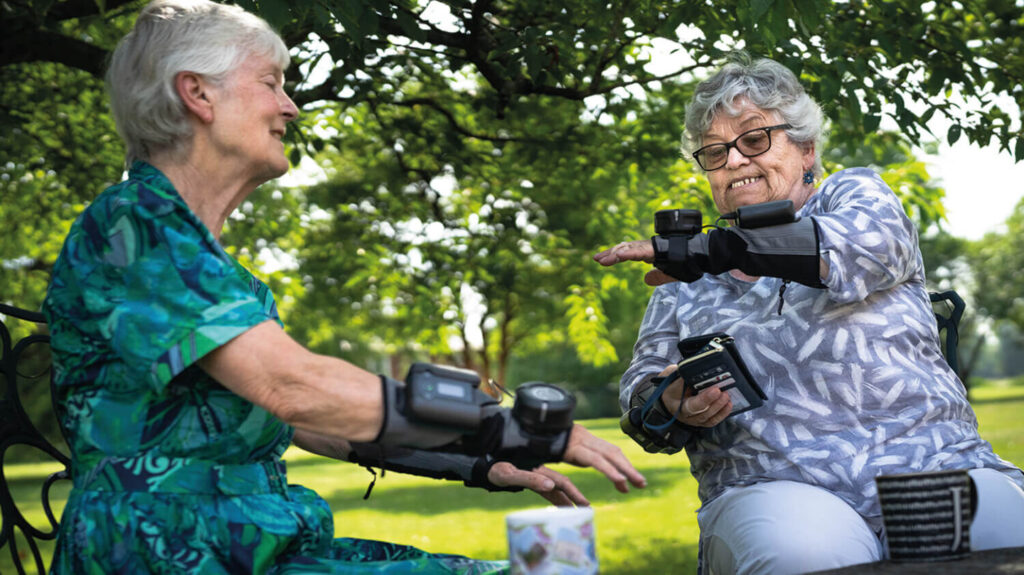
Hand tremors are one of the most common and debilitating symptoms of Parkinson’s disease.
But a new device prototype makes use of gyroscope technology to help restore muscle control to users.
The so-called GyroGlove, showcased at this week’s Consumer Electronics Show in Las Vegas, could dramatically improve quality of life for people living with Parkinson’s, approximately a quarter of whom live in nursing homes and assisted living communities.
The glove also care help those with essential tremor disorder, a condition separate from Parkinson’s but that also predominantly affects older adults.
In its current interation, the gyroscope stabilizer, which spins faster than a jet engine, sits like a watch face on top of the glove hand. The goal for future, commercially available models is to shrink the gyroscope so it’s lighter and more comfortable for users, according to one tech article.
The GyroGlove is one of several wearables developed in the past year specifically designed to target Parkinson’s symptoms. A wrist wearable, the Cala kIQ system, is also designed to alleviate hand tremors and can monitor progress. The Cala device became available to users over the summer.
Another wearable in development for treating Parkinson’s is attached to users legs and is designed to provide walking and mobility assistance. The ReWalk robotic exosuit was one of several promising interventions, including a music therapy system, being studied at Boston University’s Center for Neurorehabilitation, the McKnight’s Tech Daily reported this week.
Parkinson’s currently affects approximately 1 million Americans, but that figure is expected to grow steadily. Ongoing research efforts to tackle Parkinson’s include new adaptive deep brain stimulation tools as well as a possible blood test that could screen for the disease.




